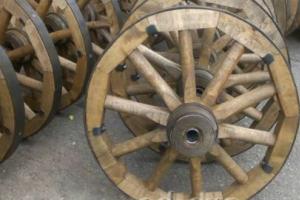Finishing the floor on a terrace or open garden area can be done using various floor coverings.
Laying decking boards is the most optimal solution. This material has high performance qualities, provides high level comfort and does not require annual repairs.
Installation methods and necessary fasteners
General diagram of a hidden method using a metal clamp
Laying deck boards can be done in two ways:
- Closing method - the material is fastened using a mounting clamp, which is inserted into the groove of the board and tightened with a self-tapping screw;
- The open method is a traditional option for laying any floor coverings. In this case, the self-tapping screw is tightened with front side product into a pre-drilled recess of larger diameter.

One type of metal clips for fixing decking
For some types, a third fixation option can be used - mounting the decking board into a clip located on the joists. In this case, fixation occurs using a locking method and does not require additional fasteners.
Ultimately, the type of fastener used is determined by the type of coating used and the manufacturer. Since most manufacturers offer their own accessories for installation and installation.
Preparing the base and installing supports

Arrangement supporting structure in the open area
To carry out high-quality and professional installation of decking boards, it is necessary to prepare the base and install supporting structures. From execution this stage The operating conditions of the floor covering directly depend.
If the technology is not followed, the supplier or manufacturer of the material has the right to refuse warranty replacement, repair or maintenance of the coating if it is damaged or other problems arise.
The technology for laying decking boards involves installing the coating on two types of surfaces - support logs and soil.
Arrangement and installation of support beams takes place on flat surface– concrete screed or foundation, concrete pedestals, screw piles, etc. Structures made of wood, wood-composite polymer, metal or plastic can be used as joist supports.

A - parallel laying, B - laying at an angle of 45 degrees, C - laying at an angle of 35 degrees
In the process of laying supporting structures on a previously prepared surface, you should observe whole line conditions:
- logs should not be in direct contact with the ground or soil;
- for wooden supports, it is advisable to use solid and conifers wood, moisture content less than 25%;
- when laying decking boards in an open space, wooden joists must be treated with a special antiseptic;
- the supports are installed parallel to each other in increments of 30-60 cm. If the facing covering is oriented diagonally, the distance between adjacent guides should not exceed 30 cm;
- To press the logs to the base, special brackets made of aluminum or stainless metal are used.
When laying supports on the ground, you should clear the required area, remove all weeds and plants, make a backfill of gravel and sand, and arrange drainage system and channels for water drainage.
To prevent the re-growth of weeds, before installing the decking board, the surface is covered with geotextiles.
Laying and installation technology
Having prepared the base for further work, purchased the material and prepared all the additional accessories, you can begin laying the decking boards yourself.
Immediately before installation, the material must undergo an adaptation period. This is done so that the coating acclimatizes to environment, air humidity, etc.
To do this, the terrace board is laid on logs or under a canopy for a period of 48-72 hours. During this time, the material will acquire its final form, ready for further work and finishing.

When installing other natural wood, the wood is first treated with an impregnating compound.
During the installation of flooring on outdoors Keep in mind that the material tends to expand and contract. This depends on the degree of air humidity and the amount of precipitation. On average, the expansion of the board, with a length of up to 6 meters, fluctuates in the range of 2-4 mm/m.p.
It is not recommended to carry out installation work at negative temperature air and rainy weather. As a tool, it is advisable to have a drill, screwdriver, grinder and paper, angle and level, pencil and tape measure.

The canvas must be fixed at each joist
Do-it-yourself installation of decking boards on support joists will look like this:
- We lay the covering on the logs and determine the orientation of the covering;
- We lay the first sheet and fix it with a self-tapping screw (length 30-35 mm, diameter 3-3.5 mm) into the countersunk hole;
- Installation of the second and subsequent boards will depend on the type of coating used and the specific manufacturer - this can be fixation with a starting profile, a mounting clip or a special clamp;
- Hidden fasteners for decking boards in the form of mounting clips are the most common method. The clip is installed in the groove of the board on each joist and is fixed with a self-tapping screw, taking into account the temperature gap;
- Installation of the second and subsequent sheets is carried out in a similar way, taking into account the gap and thermal expansion;
- The last canvas, similar to the first, is fixed with a self-tapping screw;
- The open ends of the terrace can be finished with a decorative strip, finishing plinth or a special fixing strip.
When laying and installing canvases using the “butt-to-butt” method, the connection point should be on the joist. The joint must be fixed with a mounting clip.
Operation and further care

- For regular care should use a soft bristle brush and wash high pressure, with a maximum force of 70-80 bar. Cleaning should be carried out according to the manufacturer's instructions; it is not advisable to use industrial equipment And various types solvents;
- household cleaning products can be used to clean grease and oil stains. detergents. When such contaminants appear, it is advisable to clean the surface as soon as possible;
- every time you clean, you should inspect the seams for the presence of foreign objects and dirt;
- Over time, it is recommended to change furniture, pots with plants and other decorative items. This will help avoid uneven aging of the decking board.
You can arrange a cozy terrace in a private house on our own, this will require imagination, free time and a set of tools and materials. From the right choice A lot depends on the materials - how long the terrace will last, whether additional maintenance will be required, how much the construction will ultimately cost. We decided to talk about the most the best materials which are used for decking and how to lay decking on various substrates.
Types of decking boards
The decking board is made from solid wood or from composite mixtures based on polymer and natural material.
Natural wood decking board
For solid wood decking boards, hard wood (larch, oak, teak, cedar, ipe, beech, Kumara) with a high content of resins and oils is used to prevent drying out and cracking. This board is durable and resistant to moisture and adverse weather conditions. Noble appearance and the pleasant texture of the material are highly valued by designers all over the world. The board is impregnated with special compounds to protect against insects and microorganisms. To emphasize the pattern of the wood structure, impregnations and coatings are also used. The surface of the board is made in the form of grooves, which prevent slipping and promote the outflow of moisture. Laying decking from natural wood will be an excellent choice for terraces, stairs, garden paths and gazebos, as well as places high humidity, bridges and piers. The only caveat is that this pleasure will require significant costs.
WPC decking board
Wood-polymer composite (WPC) decking board is a high-quality modern material that combines the advantages of natural wood and polymer and at the same time the cost of the coating is more affordable than that of solid wood decking. WPC board is:
- Environmental friendliness. The substances included in the composite do not form harmful compounds even when heated to 60 °.
- Long term services. The material does not deform, crack or crumble even with regular temperature changes. Moisture resistance and the absence of a breeding ground for microorganisms guarantee the absence of rotting
- Safety during operation. The board does not have burrs, which eliminates the possibility of splintering or injuring your foot; the relief will not allow you to slip even on a wet surface.
- the flooring does not require painting and specific care– wet cleaning is sufficient when dirty;
- The deck board device is most often hollow, with stiffening ribs, so the structure is light in weight. This reduces the load on load-bearing elements buildings, which is especially important when laying flooring on an existing roof;
- the material is pleasant to the touch and aesthetically attractive. Color palette includes both natural wood shades and other colors.
Laying deck boards made of wood-polymer composite is carried out not only on terraces. Piers, swimming pools, garden paths and other areas of open and closed areas are equipped with such decking.
Laying deck boards
Thanks to correct form and specially designed fasteners, the decking boards are laid using minimum quantity waste and can be done with your own hands. To work you will need:
- drill or hammer drill in case of laying on concrete base;
- drills for wood, metal, concrete;
- screwdriver;
- roulette, level;
- mallet;
- saw.
The design of a decking board, regardless of whether you choose a natural or composite board, contains several required elements: a base, a frame made of joists and the decking itself.
Base for laying decking boards
Flooring made from decking boards can be mounted on a foundation or concrete base. Regardless of the type of base, there are several key points that need to be taken into account:
- the base must withstand the expected loads;
- it is necessary to ensure the slope of the flooring so that water does not stagnate;
- Natural air circulation under the flooring must be ensured.
Concrete base
It is also possible to lay deck boards on concrete. In this case, the base is prepared in advance, and the installation of the terrace board begins after the concrete has completely dried. If the slope is not provided in advance, then you need to think about how to lay the decking board on the concrete floor in this case. It is necessary to groove the concrete, changing the depth of the groove to ensure moisture removal.
Foundation on screw piles
If you plan to add a terrace to the house and the floor level needs to be raised, then best option- This is a foundation on screw piles. Piles are also good for a free-standing gazebo. It's economical and reliable design, able to withstand load-bearing loads and withstand climatic influences. Another advantage screw piles– they can be installed independently without the use of special equipment, and the flooring will be ventilated. The piles are leveled and concrete is poured inside to prevent moisture from entering and to provide greater strength. After the concrete has hardened, a steel frame is welded onto the piles with a slope of 1-2° in the direction of laying the decking board for natural moisture drainage. After installation, the frame is painted and you can begin installing the logs.

How to lay logs under a decking board
Logs for decking boards are made from aluminum profile or composite. Composite and aluminum logs are attached at intervals of 0.375 - 0.45 m. This log spacing makes it possible to save on material, while the structure will not be inferior in strength and durability. If aluminum joists are placed on metal carcass or concrete, then it is necessary to use rubber gaskets at the fastening points to avoid corrosion. The logs are attached to the base with screws or anchors.

How to attach a deck board
Installation of deck boards is carried out using fasteners recommended by the manufacturer. As a rule, these are metal or plastic terminals designed to be installed in grooves on the board. Decorative profiles and corners are used to finish the end parts.

All methods of laying decking boards start from a fixed structure (for example, a wall), along which a series of starting terminals are attached. The starting terminals are baited, but not tightened. After this, the first board is attached to them and leveled. Only after the board is leveled can the terminals be tightened and the installation of the next rows continued.
How the decking board is attached depends on what material the decking is made of. For natural wood, metal terminals are used; the technology for laying plastic decking boards involves the use of plastic terminals. How to lay WPC decking boards depends on the area of the flooring: if the side of the installation site does not exceed the length of the board, then rows can be laid in parallel. If you need to cover a large area, then for uniform laying you need to offset each subsequent row by half the length of the board. To minimize waste, it is better to calculate in advance how to install WPC decking boards, taking into account the geometry of the space.
Installation. Instructions
Whatever the installation methods, one condition remains the same - ensuring a gap between the boards. That is why it is important to use the recommended mounting clips; their design ensures the required gap distance.
After laying and installing the finishing fasteners, the edges of the boards protruding above the joists are trimmed with a saw (the protrusion should not exceed 5 cm) and decorative end elements are installed. Before installing railings and fences, you need to rinse the deck with water from a hose and let it dry. And also check that all elements are secured.
Terrace board (decking) made of wood-polymer composite - beautiful and durable flooring for terraces, gazebos, porches, pool areas, paths personal plot. It is unpretentious in care and operation. The service life of a decking board can reach half a century or more. But for this it is important to follow all the rules and nuances of installation.
Basic rules for laying decking boards
- The surface on which the decking is laid must be level, hard and durable (for example, screed, beams, concrete slabs).
- Do not: lay logs directly into the ground. And, of course, they should not be constantly in the water.
- Drainage or drainage must be provided under the decking.
- The flooring must have a slope in the direction of drainage of at least 1%, that is, 1 cm per linear meter.
- Free air circulation must be ensured under the flooring to remove moisture. This will help prevent mold and mildew from forming.
- The screws used for decking installation must be resistant to corrosion.
- At the end of installation, the coating must be thoroughly rinsed twice with high pressure water.
Tools and materials that will be required for laying decking boards:
- terrace board;
- support beams;
- initial and intermediate staples (clasps);
- screws;
- end strips;
- plugs;
- corners;
- level;
- saw;
- tape measure and pencil;
- screwdriver;
- drill.
How to lay deck boards?
It is better to lay decking boards in dry weather, when the air temperature is above zero. It is advisable to first unpack the boards themselves and let them lie in the air for a day or two in the place where they will be laid.
Each board must be secured to special supports - logs. This can be done in one of two ways:
- perpendicular (boards are laid perpendicular to the joists);
- diagonally (boards are installed diagonally to the joists).
The process itself is simple, but has a number of nuances that need to be taken into account. Let's look at each stage of installation in detail.
Stage 1. Preparing the base for installation
The following can be used as a base for laying decking boards:
- solid, level concrete screed with a pre-laid rubber cushion;
- concrete slabs or support beams;
- adjustable screw supports;
- metal or wooden frame with a profile section of 100x100 mm and a distance between frame profiles of no more than 500 mm (if the logs are made of WPC).
Stage 2. Laying lags
The logs are installed at a distance of no more than 400 mm from each other. At diagonal laying the distance should be reduced to 300-350 mm.
It is important to maintain a compensation gap between the joists and the wall or any other obstacles - at least 10 mm. Otherwise, the boards may become deformed due to thermal expansion.
The logs must be aligned with each other and be in the same horizontal plane.
Stage 3. Installation of decking boards
Laying the board itself is done as follows.
- Using self-tapping screws, the clamps are attached to the joists. Moreover, the first clamp is screwed onto the edge of the joist.
- The decking board is laid in such a way that it fits into the clamp.
- The second clamp is installed on the opposite side. The installed board is secured.
- In the same way, clamps are installed on all joists.
Advice: Clasps must be installed on all joists. Otherwise, the decking board may sag.
- The remaining boards are installed in the same way.
Advice: The clamps must fit into the grooves of the decking board. This ensures a strong fastening, as well as the necessary gap between the boards.
- After installing all the boards, their ends are leveled and hidden with decorative caps.
- After completing the work, you need to thoroughly wash the surface of the decking board with running water.

Technology for laying decking boards: typical mistakes
In most cases, problems with decking that arise during operation are associated with errors made during its installation. Here are some of them.
- The distances between the logs are not maintained.
- The fasteners are overtightened.
- There is no or improperly arranged water drainage.
- The boards were laid without compensating gaps.
- Drainage is incorrect or lacking.
If you have not figured out how to properly lay a WPC deck board, or are not sure that you can handle this work yourself, order professional installation of the coating by specialized installation teams. Thus, certified Alta-Profile specialists have been trained by our experts and will perform all work in compliance with technological standards and manufacturer’s recommendations. Quality is guaranteed by Alta-Profile.
Operation of decking boards
The lifespan of decking primarily depends on the quality of installation. And secondly, it depends on how it is used.
In conclusion, here are some tips that will help extend the life of the decking board to 50 years or more.
- Do not allow the terrace to be flooded for more than 4 days.
- Do not use metal sponges, scrapers or spatulas for cleaning. It's better to use a regular cotton or microfiber cloth.
- Remove any defects (for example, a cigarette mark) using sandpaper.
- For washing use running water or non-abrasive, non-acid detergents.
And a stylish and solid coating will decorate your terrace, walkway, or porch for many decades!
The advantage and advantage of decking boards, like most modern materials is ease of installation. Given modern coverings, containing polymers, can be sawn and used like natural wood. Decking boards are available in various sizes, which is very convenient when choosing to solve a specific problem.
The only condition for laying the decking board to be done correctly and correctly is to follow these instructions for its use, which are given in this article.
Material with universal composition and properties
The use of polymers in the composition of the board has significantly improved its properties. And although the main component of such a floor covering is still wood, it receives its main functionality from thermoplastic composites. Included in this building material technical modifiers are also included. They are necessary for the best interaction of the functions of wood with polymers, which in turn made it possible to give the product water-repellent properties.
Thanks to these features, WPC boards are considered an ideal covering not only for verandas, but also for recreation areas around swimming pools, garden paths, and piers. The use of polymers in the material allows it to bend and take any shape, since there is a physical connection between the molecules of the composites. Disappearing when heated, it returns when cooled, which must be taken into account when installing the product.
The presence of modifiers in the board made it possible to achieve its high strength and durability. A floor made from it can easily withstand a weight equal to one ton per meter of coverage and is not at all afraid of sudden temperature changes. The range within which its use is allowed is one of the largest, from -500 to +700°C.
The advantages of WPC boards include the following properties:
- Resistance to mechanical stress;
- Simple care consisting of wet cleaning;
- Easy styling;
- Impeccable appearance.
Material Specifications
WPC decking boards are produced by various manufacturers using a specific technology and can differ in many respects. Therefore, when choosing flooring for your own needs, pay attention to the following parameters:
- Frost resistance;
- Material density;
- Flexural strength;
- Abrasion;
- Water absorption;
- Mechanical load.
These are the main technical characteristics of the board. They will vary depending on the composition of the material. For example, the most durable and aesthetically impeccable board will be the one in which the wood composition does not exceed 60%. Products where it is 80% are the most fragile, and those in which polymers predominate are externally comparable to ordinary plastic.
Let's watch the video, features and characteristics of the material:
To improve the properties of the material, manufacturers also add components such as:
- Fillers;
- UV stabilizers;
- Pigments;
- Other additives.
Their percentage is minimal compared to the amount of wood flour and high-density polyethylene.
In addition to the parameters listed above, technical specifications Product dimensions include:
- Length;
- Thickness;
- Width.
Styling garden path It is more convenient to perform using short and narrow products. For the terrace it’s the other way around ideal option there will be a board of large dimensions.
What you need to lay decking
Before you begin installing the flooring, you need to prepare the base. Moreover, it must be strengthened and withstand permissible load, only in this case the design will be durable. What materials to use to create the foundation depends on the terrain. This can be either compacted soil, on which a layer of sand or crushed stone is poured on top, or a foundation.
- On the plane - composite logs;
- In the area where there is a drain there are wooden beams.
In each of the cases under consideration, the distance between the centers of the beams should be equal to 400 mm. In addition, all supporting parts of the structure must be located at the same level.
Also, to implement any method of laying decking boards, you will need some tools:
- A circular saw;
- Screwdriver;
- Drill;
- Rubber hammer.
Installation of larch boards
The first element of the future flooring is attached perpendicular to the beam. A4 screws are used for this. They are screwed at an angle of 45 degrees into pre-made holes. Moreover, their diameter should be several larger size screw. This is necessary to compensate in case of thermal expansion.
 The inner edge of the product is secured using T-shaped clamps, and the subsequent elements are done in the same way. In addition, similar fasteners are located along the entire length of the board. They should fit snugly and not be distorted. The next board is inserted under the edge of the last T-clamp, using rubber hammer, tapping which allows you to adjust its entry.
The inner edge of the product is secured using T-shaped clamps, and the subsequent elements are done in the same way. In addition, similar fasteners are located along the entire length of the board. They should fit snugly and not be distorted. The next board is inserted under the edge of the last T-clamp, using rubber hammer, tapping which allows you to adjust its entry.
Similar actions are repeated until the entire structure is assembled.
The last element, according to the technology of laying decking boards, is installed as follows. His inner edge is secured using a T-clamp, and the outer one is connected to the support beam. If the elements are intended to be laid end-to-end, then both ends are mounted to the beam, each edge to its own.
It is very important not only to correctly lay each part, but also to observe certain intervals. First, let's look at how larch decking is laid and, in particular, the installation of the supporting structure. In it, the support logs must have gaps between the ends of at least 10 mm. The elements are spaced in increments of 250 mm for diagonal laying and 400 mm for regular laying.
 There should be at least 20 mm between the wall or fence, if one is part of the terrace structure, and the joists. In this case, the board itself is positioned perpendicular to the base and secured using mounting clips. They are also used to correctly set the distance between separate elements design, which is 5 mm. The installation gaps from one end of the board to the other are also set equal to it.
There should be at least 20 mm between the wall or fence, if one is part of the terrace structure, and the joists. In this case, the board itself is positioned perpendicular to the base and secured using mounting clips. They are also used to correctly set the distance between separate elements design, which is 5 mm. The installation gaps from one end of the board to the other are also set equal to it.
A decorative plinth is installed along the perimeter of the flooring, which is attached using self-tapping screws.
Rules for laying polymer decking boards
There is a list of requirements for the implementation of work on arranging an open area for recreation using decking. Following them will help save time, energy and money.
The first condition is the use of polymer, rather than wooden, logs, even when laying larch decking boards. If for some reason you have to use wood products, they must be pre-treated with an antiseptic. But even with a coating, they are susceptible to precipitation, which sooner or later leads to deformation of even a properly laid surface.
Watch the video, installation stages:
The use of polymer products will achieve greater structural strength. In addition, such logs are ideal sizes and do not need to be discarded. The quality throughout the entire volume of the product will be absolutely the same.
Since decking is a material consisting of many elements, you need to use a comprehensive system from one manufacturer. In this case, the compatibility of all components is guaranteed by the manufacturer and you do not have to deal with adjustments.
 Typically, all large board production plants have testing capacity and produce everything that may be needed during the laying process:
Typically, all large board production plants have testing capacity and produce everything that may be needed during the laying process:
- Lags;
- Plugs;
- Planks (corner, end);
- Kleimers.
Compliance with all the above requirements will allow you to get an ideal result. In this case, the flooring on your terrace will last quite a long time and will not require additional investments in maintenance and repairs.
To build your own terrace you need to have some knowledge. Most often, such structures are made from composite decking boards or ordinary larch. These are excellent materials that have many advantages. But for those who want to cover a terrace with decking, it is important to know how to do it. From this article you will learn how to lay larch or WPC decking boards.
You will be provided detailed instructions, list of necessary and detailed video. Thanks to this, you can do everything yourself.
What you need to lay larch decking boards
According to the instructions, before installation, the boards themselves should be installed in the place where the work will be carried out. This is necessary so that the material undergoes adaptation and acquires that temperature and humidity. The rules state that work should not be done in winter. And to extend the life of the material, you need to ventilate the boards and make a slope so that moisture drains from them.

Here's what you'll need to lay your decking:
- logs that will serve as supports and frame;
- intermediate and initial bracket;
- self-tapping screws to fix products;
- end strips;
- plugs if the planks are hollow;
- corners;
- directly the decking itself for installation.
Advice! If you decide to install WPC decking boards, then this video will help you decide on the choice of material.
As for tools for work, stock up on:
- Saw.
- With a mallet.
- Drill.
- Construction level.
- Pencil and tape measure.
- Screwdriver and drills.

When everything you need is prepared, you can begin the installation process.
Step No. 1 - prepare the base
If you want to use decking and lay boards on a base that is not prepared, then such an idea will not be successful. The base must be strong, level and smooth. As such a basis one can make concrete screed, build a columnar foundation, install metal logs. If the place where the future terrace will be is lined with grass, then you need to get rid of it.

Preparation of the base also includes creating drainage to remove moisture. To do this, the base must have a slope of 2 °. Then the water will drain from the terrace. And to speed up the movement of water, install the decking board parallel to the descent.

Step No. 2 - install logs
Once your base is leveled and prepared, you can begin installing the decking joists. Aluminum logs are more durable and stronger than wooden ones. But a wooden product is cheaper. Therefore, the choice is yours.
The support logs are installed on a concrete base and fixed to it with anchor bolts. The maximum lag pitch is 40 cm. But those places that will be subject to special loads need to be strengthened, so reduce the distance between the lags by half (20 or 25 cm).

Note! Maintain clearance near walls, thresholds, curbs or other obstacles. It is equal to 20 mm. This is enough so that the boards can expand under the influence of temperatures in the summer.

All work should be checked with a level and tape measure. Each joist must be in its place, stand level and secure. Even if the concrete screed is perfectly level, do not neglect measurements. The final result depends on how correctly you install the deck board joists. The coating should not move or creak underfoot.
Step No. 3 - install the decking board
When the logs are securely fastened, you can begin installing the decking board. Further work is quite simple. Everything is done according to the principle of fastening the lining. Here are the detailed instructions:


Work until the deck is finished.
Note! This open method fastening of terrace boards. It is the simplest, but to implement it you need to damage the coating of the products. There is another installation method, hidden. Thanks to it, the fasteners will not be visible, and the board will remain intact. The method is suitable for both larch boards and WPC.
Step No. 4 - finishing the job
If you have completely covered your terrace with larch boards, you can bring everything to fruition and correct any shortcomings. After all, the terrace has not yet acquired its completed appearance and attractiveness. First, use end caps to hide any gaps at the ends.
Advice! Most often, hollow boards are used for terraces, rather than solid ones. They are much cheaper, and are ideal for using terraces. This way you can save money without harming yourself.

An alternative option for end caps is an end strip. Thanks to it, you can hide all the imperfections on the edges, as well as sheathe the lower part of your terrace. This will give her best view. Another method to hide the ends is a polymer corner. It is attached to the board and is also the lining of the lower part. After completing all the work, all that remains is to clean the products by removing dust, shavings and other waste.

You can find instructions for laying larch decking boards in this video.
Avoid installation mistakes
Laying decking boards made of larch or other material requires strict adherence to instructions and rules. If you do something wrong, the end result may not please you. What to do to avoid mistakes? Here is the list simple rules, which you better remember:
- It is imperative to create gaps between each board. Thanks to this little trick, you can extend the service life of larch decking boards for many years. In addition, the gaps will act as ventilation, allowing the wood to breathe and dry. And in the summer heat, when the material expands, the gap will protect it from cracks and damage.
- Do not tighten the screws or other fasteners too tightly. There is no need to be overzealous, as the boards can become deformed under such strong pressure.
- If you have made a foundation or poured a concrete screed, but forgot about the slight slope, then it is important to ensure water drainage. To do this, make grooves in several places; along them, water will roll into the drainage system or onto the grass.
- Be sure to provide drainage holes.

If you do everything right and take proper care of your decking board, it will last you 25 years or more. The coating will need to be washed and cared for. Larch products need protection from time to time. They need to be treated with an antiseptic, fire retardant and other protective composition. Then neither moisture, nor fire, nor other factors will harm the coating.
Let's sum it up
You may have noticed that installing larch decking boards is not entirely difficult. It is only important to pay attention to detail and follow clear instructions. Thanks to this, you can create a beautiful, reliable, stylish, durable, environmentally friendly and durable covering on the terrace. And the work itself will cost you little.








